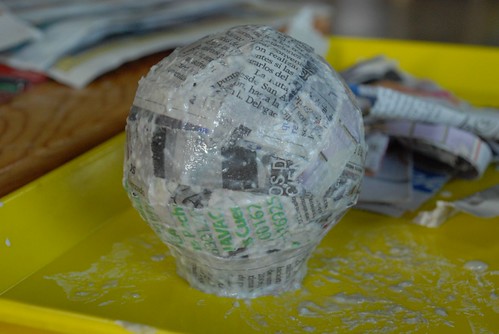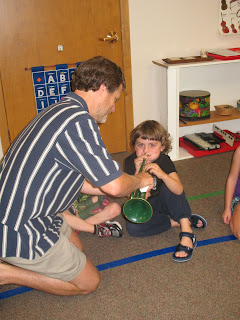Back to School –
A Strategy for Picking a Preschool
For many parents it is wrenching and bewildering to consider handing over to others even a small part of the rearing of their own child. Whether you will be sending your preschooler to a day-care center because you wish to work, or to a preschool or nursery school because you are convinced it is best for him educationally and socially, it is a big step. For just that reason, it’s not enough (even though it’s natural) to pick a school on the basis of what your friends and neighbors say, the reputation of the school, or its official educational philosophy. Your friends are not raising your particular child. Reputations can be artificial, misleading, and unreal. Official philosophy can differ from the education that takes place within a school. I would like to offer here a strategy for picking a preschool for your child. I do not plan to tell you what kind of school is best—I will try to show you how to observe, question and decide. There is a series of questions that you must answer to your own satisfaction; I will explain the questions and tell you how to go about getting the answers.
The Practical Rundown
The first step is to call the schools you are considering. I suggest that each call be made only to answer practical questions, but the director will feel better if you ask about the educational program they offer. Be interested, but don’t pursue the subject too far by telephone. You will be able to find out more accurately at the next stage, when you visit the school. The following questions can all be answered by telephone.
Can I afford the school?
Is enrollment still open for when I wish to enter my child?
Do they accept children his age?
Are the hours, location and transportation such that I can get my child there and back on time?
(If you work) I s this a day-care center that can keep my child during working hours?
If the answer to any of these questions is “no,” drop the school from your list.
Is the school licensed?
The State of Minnesota requires that preschools be licensed. A licensed school guarantees minimal fire, health and safety standards, and an acceptable pupil/teacher ratio. It does not always guarantee that the staff is professionally trained.
The Observant Parent
The following questions are subjective; they can only be answered if you take the next step—a visit to the school for observing, asking explanations, expressing doubts.
The Physical Plant—Ask to be taken on a tour of the facilities first. Check for health and safety factors. Notice the play and learning materials. Jot down materials that capture your attention: a large number of blocks, an electric typewriter, plastic “toy” toys, a nature display, interesting artwork, a workbench, letter and number games. Ask about them. The answers will tell you a great deal about the real educational goals of the school, about its attitude towards children.
The Action—Ask if you can sit down in a classroom and observe for a while. Jot down what pleases you, what disturbs you, what baffles you. Educationally, a teacher can be didactic (“this is the right way to do it”), or a resource (“come to me if you need anything else”), or an enabler (“perhaps it’s too short; would a longer one work better?”). What is the tone in the room (animated, absorbed, quiet, noisy, frantic, listless, tense, happy, busy)? How is discipline handled? What sort of conversation do you hear? Do the children play well together? You will formulate questions and doubts as you observe.
The People in the School—The director or head teacher at a school tends to set the tone, pace and method for the rest of the staff. Now is the time to talk with her. Bring up your observations: Why did the teacher interrupt the block play to offer the children a balance scale? Why do they use only one color paint? Why do they let the children use sharp tools? What is the cardboard store front for? Express whatever doubts have come up about your child in this school. Don’t ask general questions, be specific. Say, “Can you give me an example of a child that hits or bites and tell me how you handle it?” Don’t say, “What do you do with aggressive children?” Questions now about the educational program will make sense, because you have seen for yourself the materials, activities and attitudes they feel are important.
The Philosophy Hang-Up
Don’t get hung up on philosophy. Good education is a question of the match—the match between school and child. You have known your child for several years; you have observed several schools. Now you can make the match: It is no more helpful to ask yourself general questions than it is to ask teachers general questions. Do not ask yourself: Should schools push kids or leave them alone? Is social growth more important than academic development? Does the Montessori system make kids brighter than the Discovery method? Deal in specifics. Will your child be stifled in this structured school? Will he be unchallenged in this undemanding one, or discouraged in this demanding one? Is there a good balance?
The final question is:
How well can I picture my very own child in this particular school?
 We held our first MCH Parent Workshop--Montessori in the Home--in early December. What a nice way for families to plan additions or changes to their home environments in order to accommodate the growing independence of their children. With the winter upon us in full force it is a perfect time to create new and stimulating areas in your home. We hope you can use some of the ideas from our winter workshop. Happy nesting!
We held our first MCH Parent Workshop--Montessori in the Home--in early December. What a nice way for families to plan additions or changes to their home environments in order to accommodate the growing independence of their children. With the winter upon us in full force it is a perfect time to create new and stimulating areas in your home. We hope you can use some of the ideas from our winter workshop. Happy nesting!




























